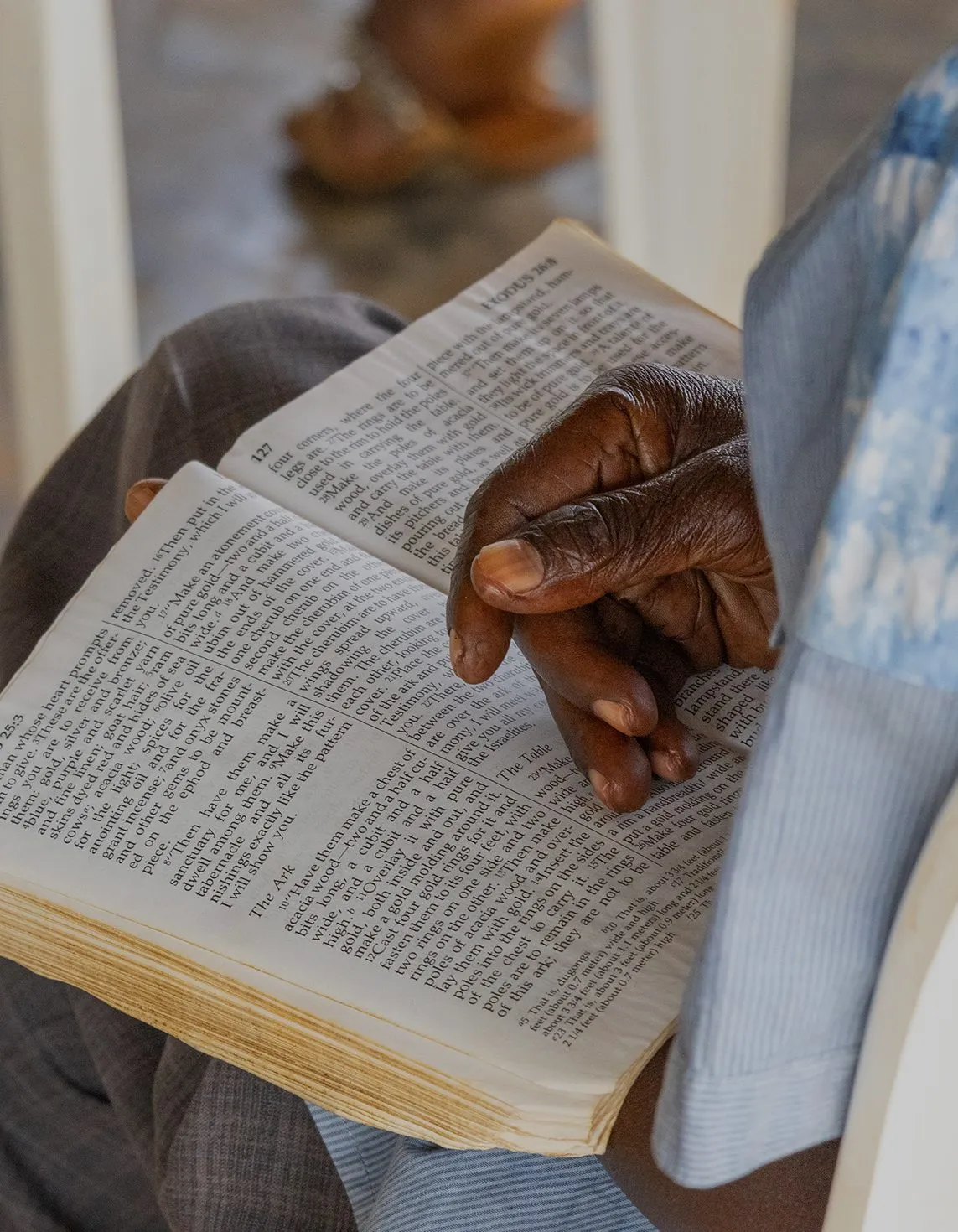
Our History
“Faithful to the Scriptures, True to the Reformed Faith, Obedient to the Great Commission of Jesus Christ.”
—Motto of the Presbyterian Church in America
Commemorating MTW’s 50th Anniversary

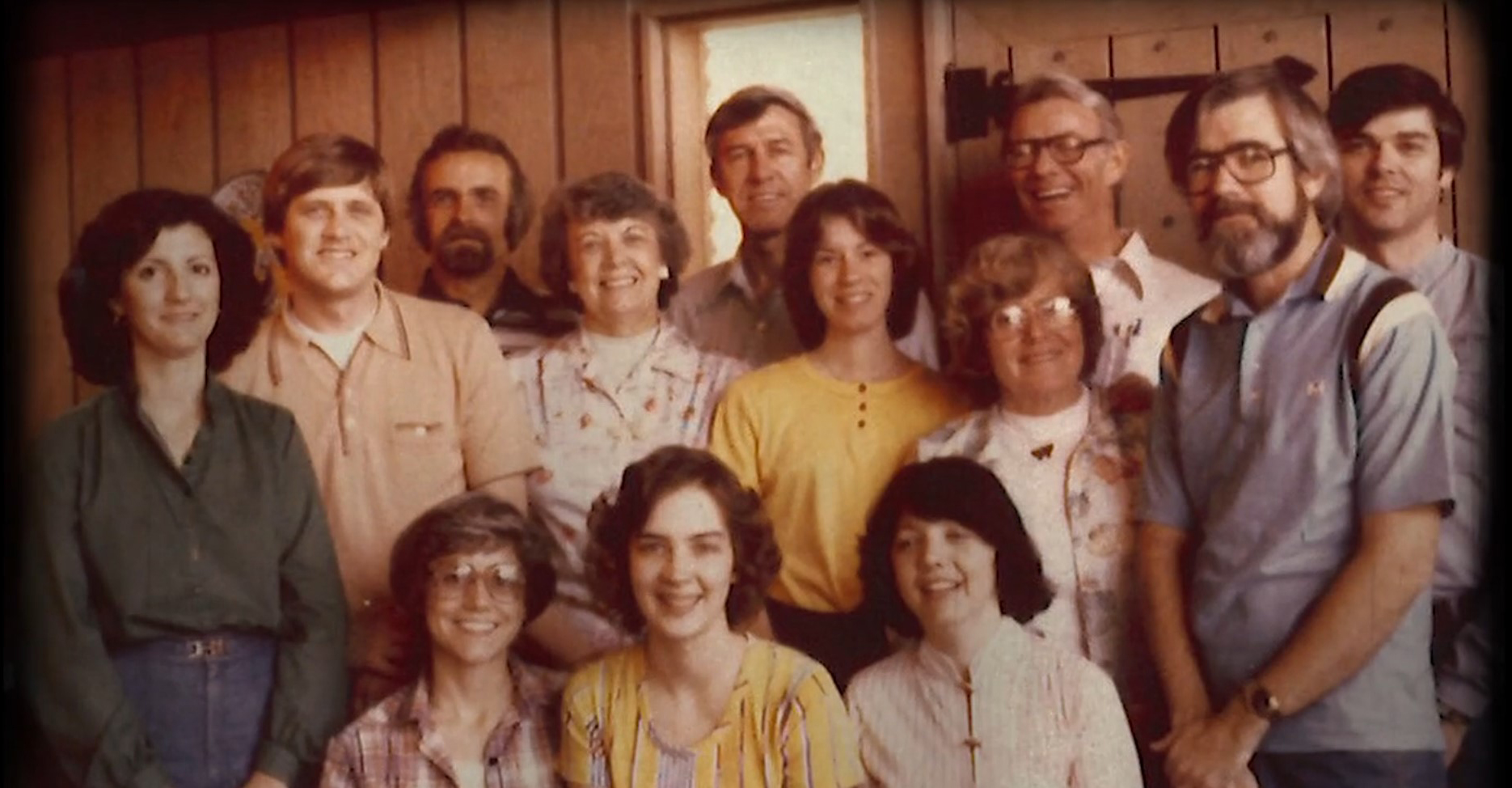
1970s
1970s
Founding of Mission to the World
In 1973, a group of gospel-centered, Reformed churches broke off from the theologically liberal Presbyterian Church in the United States to form the Presbyterian Church of America. Among the PCA’s stated reasons for leaving was the PCUS’s “departure from evangelism and missions as the primary role of the Church.” Global missions was a priority from the very beginning.
Later that same year, Mission to the World (MTW) was formed as the fledgling denomination’s international missions agency, with 25-year missions veteran and leader John Kyle appointed as its first coordinator. In the beginning, MTW had just 11 missionaries and three missionary candidates. Over the next three years, John helped the agency grow to more than 100 missionaries serving in 20 countries across the globe, including at Christ College in Taiwan and major church planting efforts in Korea and Mexico.
<< Photo: John Kyle, MTW's first coordinator
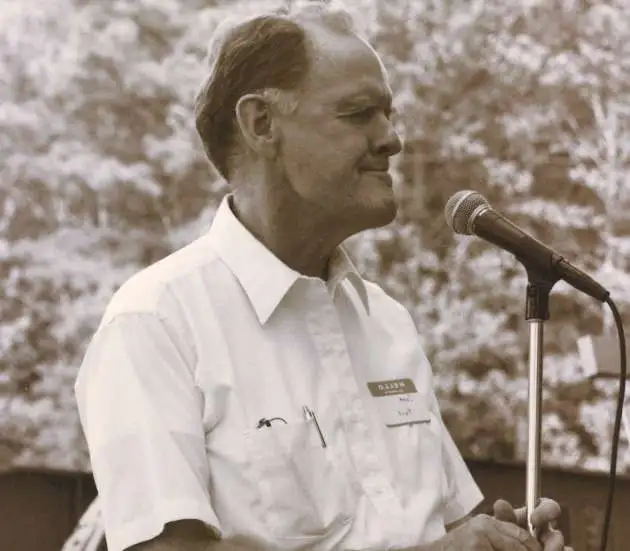
Cooperative Agreements
In those early days, the majority (around 70%) of MTW missionaries served under cooperative agreements between MTW and other organizations that differed in some areas of theology or practice. These agreements made it possible for an MTW missionary to raise his or her funds in the PCA and under MTW, remaining committed to Reformed theology and teaching while serving with the other agency in the field and doing things such as flying planes, translating the Bible, or working in Muslim communities—opportunities MTW could not provide on its own at the time. In the years since, this trend has reversed—with the majority of MTW missionaries serving primarily in church planting.
When John Kyle resigned from MTW to join Wycliffe Bible Translators in 1977, seasoned evangelist and cross-cultural missionary Paul McKaughan stepped into the gap as the organization’s second coordinator, leading MTW through the next decade of growing ministry.
Cooperative Agreements
In those early days, the majority (around 70%) of MTW missionaries served under cooperative agreements between MTW and other organizations that differed in some areas of theology or practice. These agreements made it possible for an MTW missionary to raise his or her funds in the PCA and under MTW, remaining committed to Reformed theology and teaching while serving with the other agency in the field and doing things such as flying planes, translating the Bible, or working in Muslim communities—opportunities MTW could not provide on its own at the time. In the years since, this trend has reversed—with the majority of MTW missionaries serving primarily in church planting.
When John Kyle resigned from MTW to join Wycliffe Bible Translators in 1977, seasoned evangelist and cross-cultural missionary Paul McKaughan stepped into the gap as the organization’s second coordinator, leading MTW through the next decade of growing ministry.
“A person who is not interested in missions has not been properly exposed. Few churches stress missions, mainly because the pastors themselves lack education and exposure … When pastors are really turned on, the people will follow them.”
—John Kyle, MTW Coordinator 1974–1977, 1988–1994
“A person who is not interested in missions has not been properly exposed. Few churches stress missions, mainly because the pastors themselves lack education and exposure … When pastors are really turned on, the people will follow them.”
—John Kyle, MTW Coordinator 1974–1977, 1988–1994
CMTW
Committee on Mission to the World, gathering approx. late 70s, early 1980s.
CMTW
Committee on Mission to the World, gathering approx. late 70s, early 1980s.
Early MTW Medical Ministry
Kathy S gives medical aid to locals in Haiti – late 1970s.
Early MTW Medical Ministry
Kathy S gives medical aid to locals in Haiti – late 1970s.


1980s
1980s
Growing Up, Moving Out
Under Paul’s leadership, MTW began strategically targeting global cities for church planting initiatives, ministering primarily to the middle- and upper-classes—a tactic aimed at transforming urban cultural centers with the power of the gospel. During these years, MTW also increased its global ministry focus on reaching unreached people groups, planting Reformed churches, and sending teams to minister in Third World contexts—continually growing both its missionary staff and the number of countries reached.
Hand in hand with its primary works of evangelism, discipleship, and church planting, MTW also worked to serve the physical needs of the world’s most vulnerable in the wake of natural or man-made disasters. When a typhoon caused a massive tidal wave in the Bay of Bengal, MTW responded with relief teams and funds to aid refugees in South Asia. When famine struck Bangladesh, Haiti, and the Sahel region of Africa, MTW sent food and aid. From the very beginning, MTW paired ministries of mercy and justice with evangelism and long-term church planting efforts.
Photo: Jim Stewart – a Servants in Missions Abroad (SIMA) missionary in Africa >>
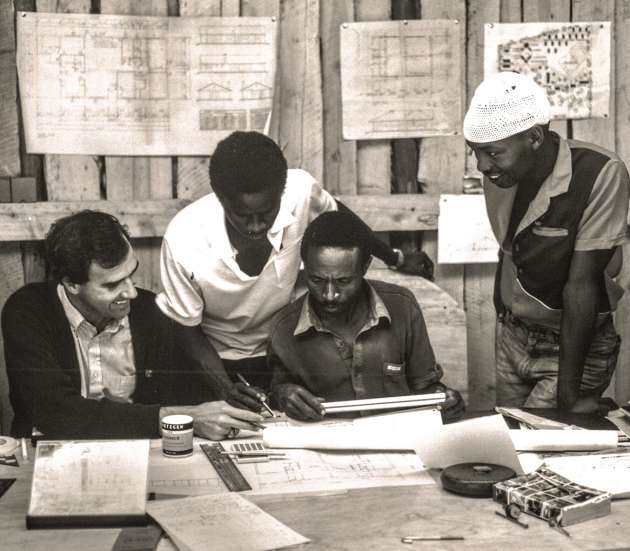
Merging and Growing
In 1983, MTW merged with World Presbyterian Missions, nearly doubling MTW’s number of missionaries. During that same year, MTW sent out 36 young adults on its first ever summer mission program, Servants in Missions Abroad (SIMA), beginning a short-term missions trip initiative that would grow enormously in the years to come.
When Paul McKaughan resigned as coordinator in 1987—leaving to serve on the Lausanne Committee for World Evangelism—Carl Wilhelm, the MTW Committee’s Coordinator of Overseas Operations, stepped in as acting coordinator for one year. In 1988, John Kyle returned to MTW, serving his second term as coordinator until 1994.
Merging and Growing
In 1983, MTW merged with World Presbyterian Missions, nearly doubling MTW’s number of missionaries. During that same year, MTW sent out 36 young adults on its first ever summer mission program, Servants in Missions Abroad (SIMA), beginning a short-term missions trip initiative that would grow enormously in the years to come.
When Paul McKaughan resigned as coordinator in 1987—leaving to serve on the Lausanne Committee for World Evangelism—Carl Wilhelm, the MTW Committee’s Coordinator of Overseas Operations, stepped in as acting coordinator for one year. In 1988, John Kyle returned to MTW, serving his second term as coordinator until 1994.
“Ministry flows from relationship.”
—Paul McKaughan, MTW Coordinator 1977–1987
“Ministry flows from relationship.”
—Paul McKaughan, MTW Coordinator 1977–1987
Congress on World Evangelization, Thailand – 1980
Left to right: Archie Parrish, William Shoemaker, John E. Kyle, Paul McKaughan, Donald B. Patterson, Robert G. Rayburn, Arthur Glasser
Congress on World Evangelization, Thailand – 1980
Left to right: Archie Parrish, William Shoemaker, John E. Kyle, Paul McKaughan, Donald B. Patterson, Robert G. Rayburn, Arthur Glasser
1990s
1990s
Cities, Summers, & New Opportunities
By the early ‘90s, MTW missionaries were serving more than 24,000 people in more than 900 churches across the globe. During this time MTW also started a leadership development program to equip and empower all leaders of church-planting teams and began researching tent-making opportunities to enable missionaries to better serve in areas closed to missionary activity.
All the while, with the same aim of cultivating future career missionaries, MTW continually expanded its short-term and summer missions opportunities. By 1999, 3,840 people went on short-term or summer mission trips through MTW. By 2005, those numbers hit an all-time high of 7,500 participants.
<< Photo: MTW staff member, Marty Davis meets with a Ukrainian pastor, Sergei Betin and wife, Luda Betina, of Belgorod Presbyterian church.

Bearing Fruit
The 1990s also saw a number of long-standing missions efforts bear fruit. In Korea, MTW missionaries reported that churches had been planted in 1,163 villages. In South Asia, MTW missionaries cared for 632 children in two homes. When the Berlin Wall fell in 1989, formerly communist Eastern Europe was suddenly open to Christian missionaries. Joining together with many other Christian organizations and churches in a massive strategic effort dubbed The CoMission, MTW sent hundreds of short-term missionaries and church-planters to advance the gospel in Odessa, Ukraine—an effort that would ultimately result in a large-scale church-planting movement and the establishment of a Ukrainian Presbyterian denomination.
In 1994, Paul Kooistra was installed as MTW’s fourth coordinator—a position he would hold for the next two decades.
Bearing Fruit
The 1990s also saw a number of long-standing missions efforts bear fruit. In Korea, MTW missionaries reported that churches had been planted in 1,163 villages. In South Asia, MTW missionaries cared for 632 children in two homes. When the Berlin Wall fell in 1989, formerly communist Eastern Europe was suddenly open to Christian missionaries. Joining together with many other Christian organizations and churches in a massive strategic effort dubbed The CoMission, MTW sent hundreds of short-term missionaries and church-planters to advance the gospel in Odessa, Ukraine—an effort that would ultimately result in a large-scale church-planting movement and the establishment of a Ukrainian Presbyterian denomination.
In 1994, Paul Kooistra was installed as MTW’s fourth coordinator—a position he would hold for the next two decades.
“As I see it, we have done a pretty good job of reaching some unreached people in rural areas of the world, but the real task facing us is evangelizing the unreached in urban situations. … Thousands are moving from the country to the city. In one city alone there can be dozens of complex ethnic groups, a barrier just as formidable as tribal groups.”
—John Kyle, MTW Coordinator 1974–1977, 1988–1994
“As I see it, we have done a pretty good job of reaching some unreached people in rural areas of the world, but the real task facing us is evangelizing the unreached in urban situations. … Thousands are moving from the country to the city. In one city alone there can be dozens of complex ethnic groups, a barrier just as formidable as tribal groups.”
—John Kyle, MTW Coordinator 1974–1977, 1988–1994
Kids from a South Asia Children’s Home – 1990s
MTW ministries grow to be able to include a home for displaced young girls in South Asia where they receive food, shelter, and education with the support of local missionaries.
Kids from a South Asia Children’s Home – 1990s
MTW ministries grow to be able to include a home for displaced young girls in South Asia where they receive food, shelter, and education with the support of local missionaries.
Aid for Refugees in Uganda – 1993
Over 20,000 refugees displaced by the conflicts in Zaire were able to shelter here and receive clean drinking water thanks to the aid of funds from MTW Minutemen, an early term for donors committed to provide funds quickly in the wake of a disaster.
Aid for Refugees in Uganda – 1993
Over 20,000 refugees displaced by the conflicts in Zaire were able to shelter here and receive clean drinking water thanks to the aid of funds from MTW Minutemen, an early term for donors committed to provide funds quickly in the wake of a disaster.


2000s
2000s
Many Ministries
During the early 2000s, MTW began to emphasize its role as a facilitator or partner, helping PCA churches in the United States achieve their Great Commission goals and partnering with local Christian leaders across the globe—empowering them to plant and lead local churches rather than primarily depending on American missionaries to do so.
When the 2008 economic recession took its toll on the American Church, MTW’s global church planting ministries continued to thrive and expand—particularly in Asia. Decades of faithful ministry in the Philippines resulted in more than 50 churches planted. By 2010, MTW missionaries were able to completely turn this ministry over to national leadership—one milestone of many as missionaries across the globe began to see their work bear fruit for the kingdom.
Photo – Street Child ministry in Central Asia. >>
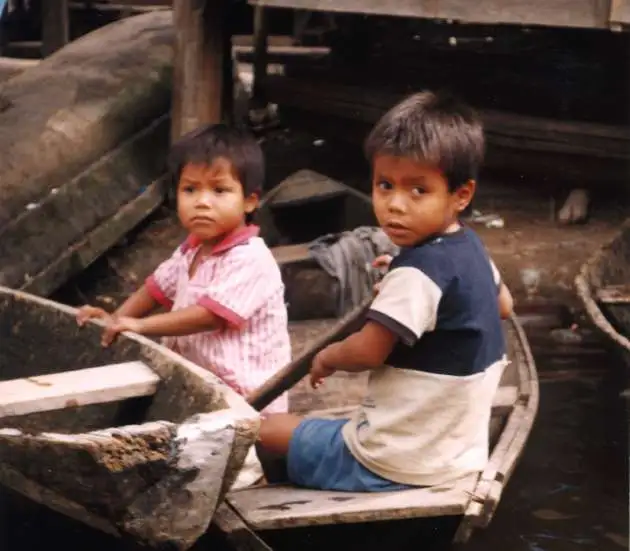
Focused Ministries
Even as church planting remained MTW’s raison d’etre, under Paul Kooistra’s leadership MTW started a number of focused ministries and departments—all working to support this larger goal through a holistic ministry framework. In 2001, MTW started a global mercy ministry to street children, beginning with works in Peru, Kenya, and Romania. The recently formalized medical ministry began to grow, and short-term medical missions and disaster response teams were sent to minister to those in need all across the globe, including responding to an earthquake in South Asa in 2001, tsunami relief efforts in Sri Lanka, Thailand, and Indonesia in 2004, and Hurricane Katrina in the United States in 2005. As the AIDS crisis in Africa accelerated, MTW missionaries responded by starting holistic ministries in some of the poorest and hardest-hit slums of Ethiopia—a ministry that today is thriving and has resulted in several church plants.
Focused Ministries
Even as church planting remained MTW’s raison d’etre, under Paul Kooistra’s leadership MTW started a number of focused ministries and departments—all working to support this larger goal through a holistic ministry framework. In 2001, MTW started a global mercy ministry to street children, beginning with works in Peru, Kenya, and Romania. The recently formalized medical ministry began to grow, and short-term medical missions and disaster response teams were sent to minister to those in need all across the globe, including responding to an earthquake in South Asa in 2001, tsunami relief efforts in Sri Lanka, Thailand, and Indonesia in 2004, and Hurricane Katrina in the United States in 2005. As the AIDS crisis in Africa accelerated, MTW missionaries responded by starting holistic ministries in some of the poorest and hardest-hit slums of Ethiopia—a ministry that today is thriving and has resulted in several church plants.
“God is the painter, and we are the paintbrush. God is the one who accomplishes the work. He accomplishes it through us, but we’re just the instrument.”
—Paul Kooistra, MTW Coordinator 1994–2014
“God is the painter, and we are the paintbrush. God is the one who accomplishes the work. He accomplishes it through us, but we’re just the instrument.”
—Paul Kooistra, MTW Coordinator 1994–2014
Teaching in Honduras – 2008
Missionary Mike Pettengill teaches at a local village in La Ceiba, Honduras
Teaching in Honduras – 2008
Missionary Mike Pettengill teaches at a local village in La Ceiba, Honduras
2010s–Present
2010s–Present
The Kingdom Advancing, One Church Plant at a Time
The last decade has been one of global upheaval and incredible opportunities for growing the Church and advancing the gospel around the world. In Vanuatu and South Asia, Spirit-driven movements saw thousands come to faith—and MTW missionaries were right in the thick of the evangelism and church planting. As the world became increasingly aware of the scourge of modern-day slavery, MTW church-planting teams in Cambodia and Bulgaria launched anti-trafficking ministries, reaching, discipling, serving, and empowering women and children trapped in the sex trade. When conflict in Africa, the Middle East, and Central Asia spurred a global refugee crisis, MTW missionaries in Greece and Germany opened their hearts and the doors of their churches to serve the displaced with gospel-driven love.
<< Photo: Rev James Bab, a South-Sudanese pastor stands with other refugees in Uganda. He received shelter and theological training from MTW missionaries Don & Fran McNeill.
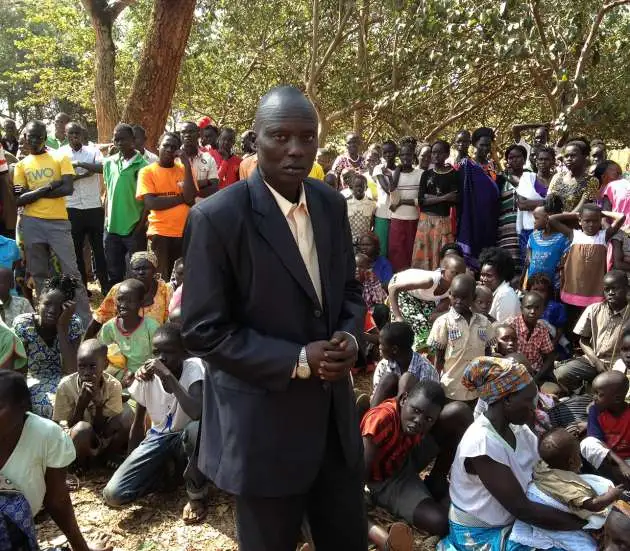
Three Strategic Initiatives
In 2014, Paul Kooistra retired, and veteran MTW missionary Lloyd Kim was appointed the agency’s fifth coordinator. Under his leadership, MTW has adopted three strategic initiatives to help carry forward its disciple-making mission and vision: globalization (growing gospel-centered church-planting partnerships across the globe), diversification (sending a more diverse missionary force—the better to reflect the diverse kingdom of God), and mobilization (sending more people as cross-cultural missionaries).
In 2016, Lloyd challenged each PCA church to pray that, over the next 10 years, God would raise up an additional 1% of their members to serve as cross-cultural missionaries. That “tithe of a tithe” would mean 2,800 new missionaries sent out to proclaim the gospel, plant churches, and be the hands and feet of Christ across the globe.
Three Strategic Initiatives
In 2014, Paul Kooistra retired, and veteran MTW missionary Lloyd Kim was appointed the agency’s fifth coordinator. Under his leadership, MTW has adopted three strategic initiatives to help carry forward its disciple-making mission and vision: globalization (growing gospel-centered church-planting partnerships across the globe), diversification (sending a more diverse missionary force—the better to reflect the diverse kingdom of God), and mobilization (sending more people as cross-cultural missionaries).
In 2016, Lloyd challenged each PCA church to pray that, over the next 10 years, God would raise up an additional 1% of their members to serve as cross-cultural missionaries. That “tithe of a tithe” would mean 2,800 new missionaries sent out to proclaim the gospel, plant churches, and be the hands and feet of Christ across the globe.
“Our vision isn’t just maintaining what we have. It’s the gospel of the kingdom advancing through the world. What would a kingdom-advancing prayer look like? We want to challenge the church to offer up its best evangelists, disciple-makers, and leaders to go and serve in missions.”
—Lloyd Kim, MTW Coordinator 2015–Present
“Our vision isn’t just maintaining what we have. It’s the gospel of the kingdom advancing through the world. What would a kingdom-advancing prayer look like? We want to challenge the church to offer up its best evangelists, disciple-makers, and leaders to go and serve in missions.”
—Lloyd Kim, MTW Coordinator 2015–Present
Staff Brunch Welcoming Lloyd Kim
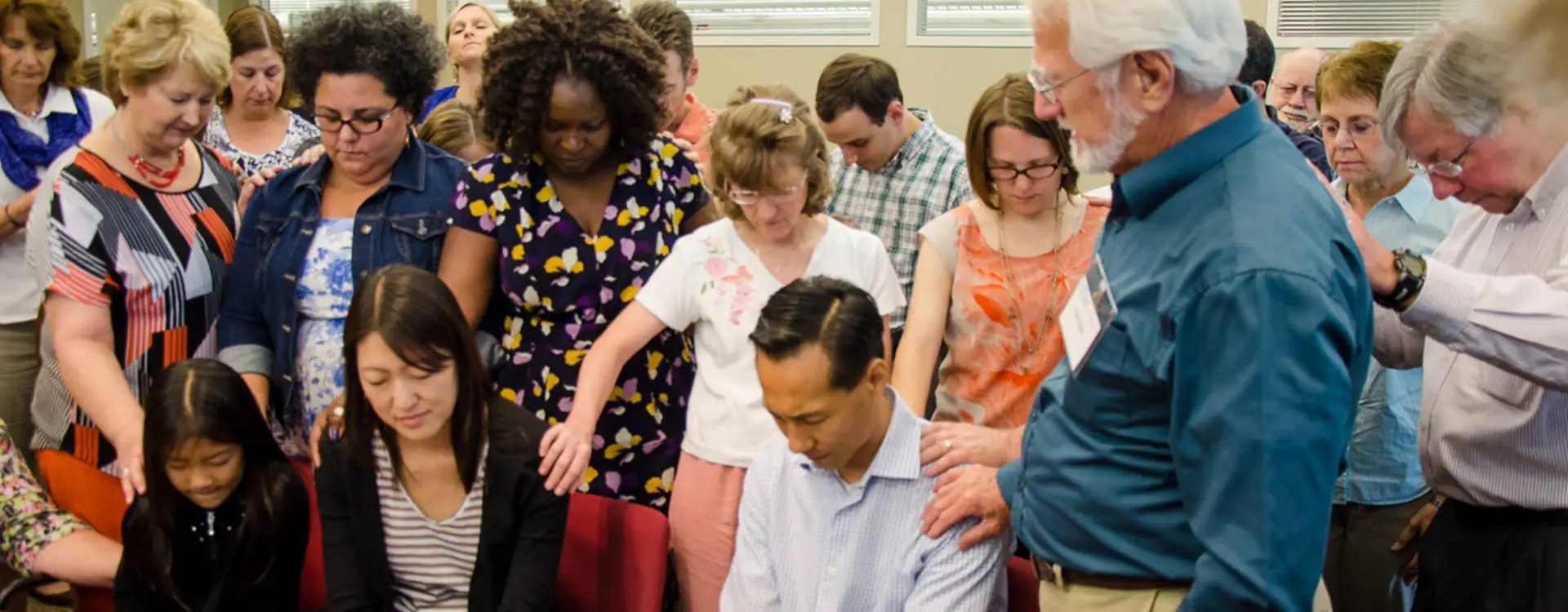
MTW staff welcome and pray for Dr. Lloyd Kim and his family — Fall 2014
Looking Back,
Looking Forward
Over nearly a half century of ministry, MTW’s size and kingdom impact have grown enormously: from a scrappy handful of missionaries with a budget of just $100,000 to a global agency comprised of 509 long-term missionaries, 1274 missionaries, interns, and trip participants, as well as 1,252 national partners serving in 104 different countries around the world.
Today, all across the globe, MTW missionaries are planting churches, discipling university students, and training local Christian leaders with solid, Reformed theology. Medical missionaries serve the poor in the mountains of Peru and the slums of Ethiopia; artists use their craft as a vehicle for evangelism, discipleship, and expressing the beauty of our Creator in Germany and Japan; and entrepreneurs start business as missions enterprises in countries hostile to the Christian faith. The particular callings pursued by our missionaries are diverse, and yet the Church is at the center of each.
Looking Back,
Looking Forward
Over nearly a half century of ministry, MTW’s size and kingdom impact have grown enormously: from a scrappy handful of missionaries with a budget of just $100,000 to a global agency comprised of 509 long-term missionaries, 1274 missionaries, interns, and trip participants, as well as 1,252 national partners serving in 104 different countries around the world.
Today, all across the globe, MTW missionaries are planting churches, discipling university students, and training local Christian leaders with solid, Reformed theology. Medical missionaries serve the poor in the mountains of Peru and the slums of Ethiopia; artists use their craft as a vehicle for evangelism, discipleship, and expressing the beauty of our Creator in Germany and Japan; and entrepreneurs start business as missions enterprises in countries hostile to the Christian faith. The particular callings pursued by our missionaries are diverse, and yet the Church is at the center of each.